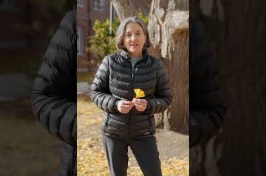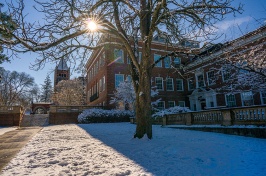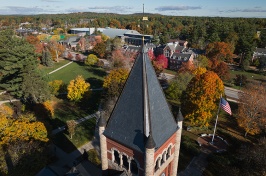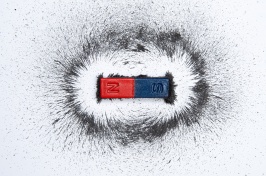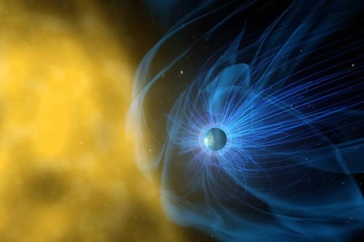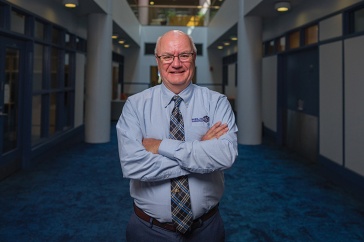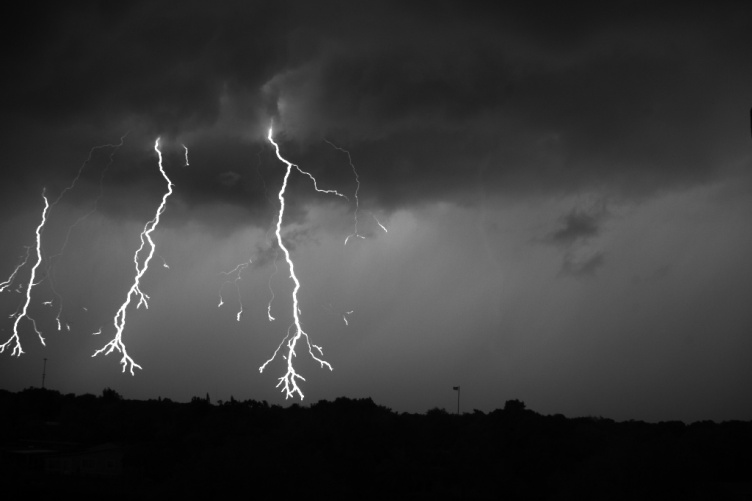
Lightning, for all its breathtaking and fearsome beauty, remains an incredibly mysterious force of nature. Now, a new study from UNH reveals a key piece of evidence that’s eluded scientists since the days of Ben Franklin’s kite experiment: how lightning actually begins within a storm cloud.
Chris Sterpka, a UNH Ph.D. student studying lightning physics, is the first author of a groundbreaking study published in the journal Geophysical Research Letters that could fundamentally shift the future of lightning research and ultimately improve the protection of humans and infrastructure from lightning strikes.

“This is huge,” Sterpka says of the study results. “This is the first time we can actually see lightning initiation in three dimensions and on such a small scale — these new data offer an increase in timing precision and accuracy over previous studies, which allowed us to image lighting with more detail.” And for researchers who study the physics of particles that are smaller than an atom and travel at nearly the speed of light, that precise scale really, really matters.
Within the lightning science community, there have been two major competing theories on how lightning begins: either by cosmic rays from outer space that enhance the electrical field within the clouds, or by a series of subatomic processes that cause electrons within the cloud to form streamers, which are filamentous cold plasma. As more and more streamers form, it leads to an avalanche that boosts the background electrical field enough to form a hot leader channel, the pathways that lightning can use to travel out of the cloud.
The problem is that it’s difficult to see inside a storm cloud to find out which theory holds weight; cameras flown into clouds haven’t proven very successful, so scientists turned to a large array of radio telescopes (called the Low Frequency Array, or LOFAR) in The Netherlands to pick up radio waves generated from lightning. A large lightning event recorded by LOFAR in 2018 caught the eye of some scientists, who tapped Sterpka to scour through mountains of data to produce detailed images of the exact moment when lightning may have started. After months of piecing together a three-dimensional map using radio waves at the nanosecond scale, Sterpka and the rest of the science team began to get excited over the results. Discussions ensued, and they concluded that “the sources of lightning are indeed the streamers, and that supports the hydrometeor initiation theory,” Sterpka explains. He’s currently combing through a couple of other LOFAR datasets and says he is finding similar results, indicating that the 2018 lightning strike was not unique; it’s likely that most lightning begins this way, not just the large events, he adds.
"This is huge. This is the first time we can actually see lightning intiation in three dimensions and on such a small scale."
“This study really sheds light on how the majority of lightning flashes are initiated,” says Ningyu Liu, UNH professor of physics and a co-author on the paper. “Previous research using small radio sensor arrays has helped us to study the electrical breakdown at the start of large lightning events that generate strong radio signals, but the LOFAR radio telescopes are much more powerful, allowing us to obtain details of lightning initiation starting with weak radio events.”
“To me, this study also provides strong motivation to improve the sensitivity of small radio sensor arrays — those smaller than LOFAR — dedicated to lightning observation,” Liu adds.
But for all the clarity gained from these data, another head-scratcher emerged: As the radio waves ramped up at an exponential rate, their velocity remained linear. “We don’t know how that’s possible,” Sterpka says, noting that they should both be linear, according to the hydrometeor initiation theory. “It’s puzzling. Hopefully we’ll find some clues in similar behavior as we examine other data sets.”
In the wake of this study, numerous scientists and journalists have reached out to Sterpka to talk to him about the results. The attention has been a little overwhelming, he admits, but he is excited to discuss the findings.
“To be able to go through the data and see things on this level, to actually be able to extract meaningful data and piece it together like this — it’s just fascinating,” he adds.
This research was funded by UNH AFOSR Grants No. FA9550-16-1-0396 and No. FA9550-18-1-0358.
The Institute for the Study of Earth, Oceans, and Space (EOS) is UNH's largest research enterprise, comprising six centers with a focus on interdisciplinary, high-impact research on Earth and climate systems, space science, the marine environment, seafloor mapping and environmental acoustics. With more than $60 million in external funding secured annually, EOS fosters an intellectual and scientific environment that advances visionary scholarship and leadership in world-class research and graduate education.
-
Written By:
Rebecca Irelan | Institute for the Study of Earth, Oceans, and Space | rebecca.irelan@unh.edu | 603-862-0990













